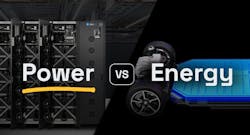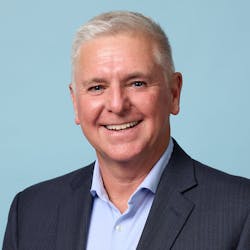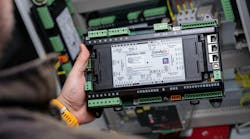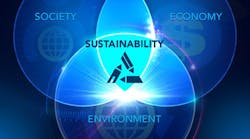Power vs. Energy: How to Make the Right Battery Choice for Your Application
There’s no one answer, because each battery chemistry has different strengths and weaknesses. By choosing the best-fit battery for each application, users can optimize the performance, cost effectiveness, and reliability of their power backup and energy storage systems.
Different rechargeable battery chemistries – such as lead-acid, lithium-ion, and nickel-zinc – are best suited to their own particular use cases. As the incumbent technology in many applications, lead-acid batteries often provide a sense of familiarity and security in addition to cheap prices. While they continue to have their place in energy storage, it’s worth looking into alternative options for applications that require significant energy or power density. For these specific needs, newer chemistries offer benefits including higher performance, longer lifespan, and greater reliability.
Energy Batteries for Long-Duration Needs
For instance, transitioning to cleaner transportation relies greatly on electric vehicle (EV) adoption. EVs demand energy density from their batteries: they must store and steadily release a supply of energy for prolonged periods, while being lightweight enough for cars to carry them easily. With a relatively low weight and high energy density, lithium-ion batteries serve long-discharge needs and thus excel in EV transportation applications.
Large-scale renewable energy storage is another ideal application for energy batteries such as lithium since the grid’s ongoing energy demands often require several hours of sustained energy release. These needs prioritize the duration of energy being provided, even if the discharge rate is moderate to low.
Power Batteries for Short-Duration Services
Other applications require batteries with high power density. Rather than supplying energy over a longer period of time, batteries with high power density supply vast amounts of power for relatively short periods of time – for instance, when a data center needs backup power to maintain its processing capability and preserve reams of highly valuable and sensitive information from outages.
In the context of Uninterruptible Power Supply (UPS) systems, lithium-ion batteries perform adequately – but it’s not their forte. While they’re energy-dense, they aren’t as power-dense as other options. For example, to house enough lithium batteries to power a data center for even a few minutes, operators need to use up valuable space and spend more to get enough batteries for the job. Lithium-ion batteries are also prone to thermal runaway and require special fireproofing equipment, making them more complex and expensive to install. They do best in cars and phones, not data centers.
These UPS applications require impressive amounts of battery power – but only for a few minutes, until the backup generators come online. Here’s where nickel-zinc battery chemistries shine. With a significantly smaller footprint per kW than lithium and lead-acid batteries, nickel-zinc batteries provide the same amount of power as lead-acid batteries up to twice their size. This allows data centers to save valuable space for servers while storing the vast power needed to safeguard their data.
Similarly, batteries are used to start generators that help power major operations, especially for backup power. According to Cummins Power Generation, “weak or undercharged starting batteries are the most common cause of standby power system failures.” Uptime Institute’s analysis notes that the single biggest cause of power incidents is failures to these standby power systems. Gensets don’t require prolonged periods of battery operation, as they only need power for the short time it takes to start the generators. As a result, the application's priorities are reliability and a high discharge rate, at which power batteries such as nickel-zinc excel.
Some of the most challenging and significant battery system return-on-investment applications also require megawatts of power for mere seconds -- even milliseconds. Numerous industrial and safety-related systems require this type of immediate power. Power batteries such as nickel-zinc are an environmentally and financially attractive alternative to running expensive generators and using utility power to support short-duration power bursts.
Hybrid Battery Approach for the Best of Both Worlds
To power microgrids and provide grid storage, operators can take advantage of multiple battery types. Lithium-ion batteries provide endurance for long-duration capacity needs, while nickel-zinc batteries’ power density can handle peak demand times at a lower infrastructure cost. Balancing the load between both chemistries enhances the grid's efficiency in managing renewable energy resources. For data centers, this is a growing segment as customers look to supplement the grid, provide frequency regulation or peak shaving, while also maintaining their UPS backup runtime. A combination of power and energy where two chemistries can combine to give the data center operator the best of both worlds.
The same hybrid principle applies to EV charging stations. Lithium-ion batteries can meet lower-power charging needs, while nickel-zinc batteries facilitate rapid high-power top-ups as fast charging becomes more prevalent. Including both in a charging station combines the strengths of each to optimize the charging experience.
In conclusion, now that the market offers numerous battery chemistries, securing an energy-resilient future relies on selecting the right battery for each application. While no single battery chemistry can fulfill all requirements, users can optimize their systems with the best fit for each use. The future of energy storage relies on a clever combination of numerous battery types to ensure reliable, sustainable energy across industries – no matter what.
Tim Hysell is the co-founder and CEO of ZincFive and has over three decades of entrepreneurial success in founding, owning, and directing profitable business operations in renewable energy, banking, manufacturing, and medical devices. ZincFive is a leader in innovation and delivery of nickel-zinc batteries and power solutions. Contact ZincFive to learn how nickel-zinc chemistry can provide high power density and performance for mission critical applications.



